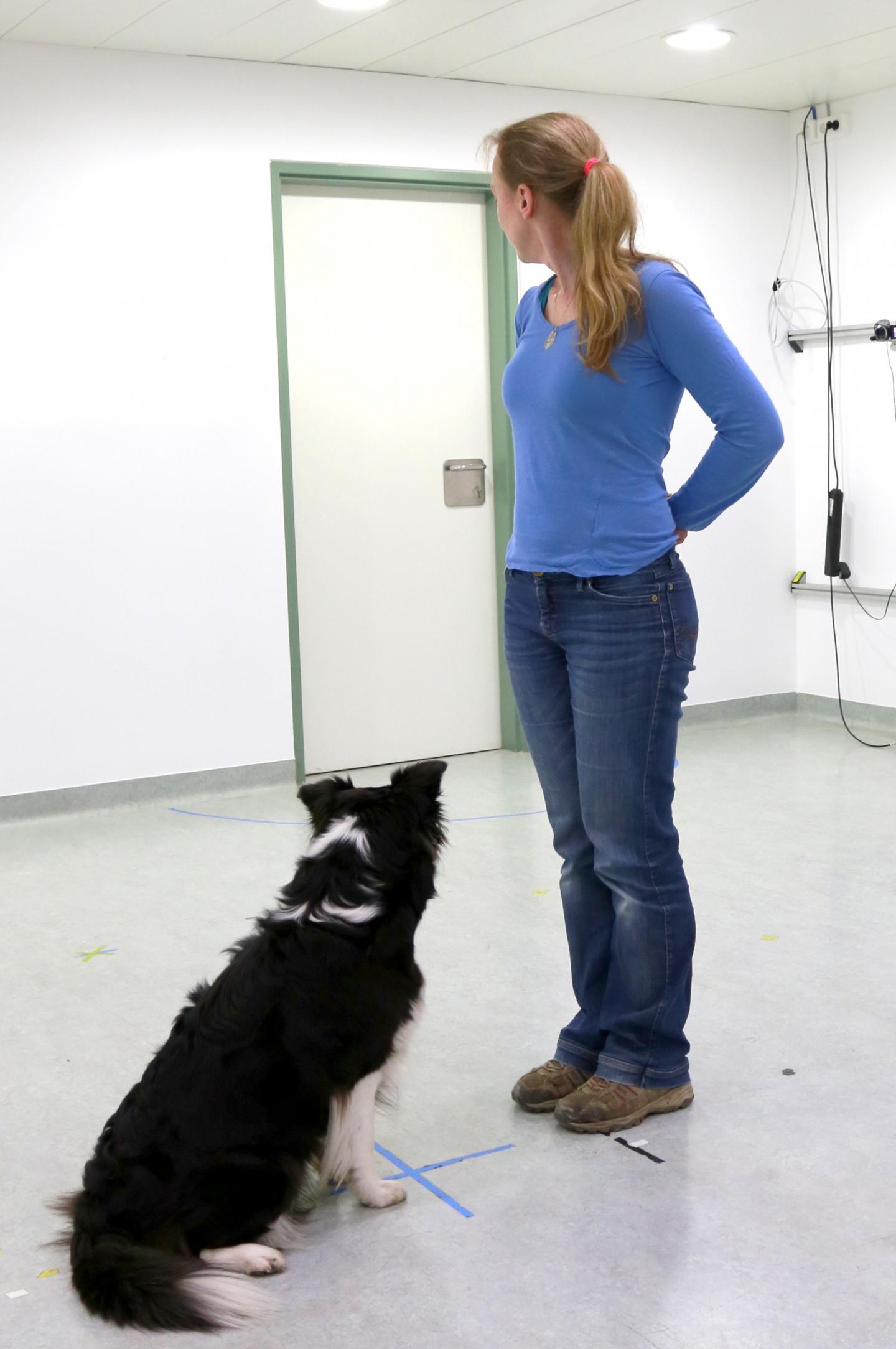Gaze following to distant space has been documented in many species such as primates, domesticated goats, several bird species, dolphins, fur seals, the red-footed tortoise and wolves. Gaze following is therefore a basic response found in many taxa. Dogs may present a special case as we find evidence that they are able to follow human gaze to objects such as food or toys, but not for the comparatively simpler task of following gaze into distant space.
Two possible reasons were offered to explain this phenomenon: One reason could be habituation. Dogs lose their innate gaze following response as they age, as they are frequently exposed to human gaze cues over their lifespan and slowly stop responding to them. Another reason could be formal training such as obedience, agility, and trick training may interfere with the dogs' response to gaze cues, since dogs are usually trained to look at the owner, to wait for commands and ignore distractions.
What influences dogs' gaze following response to human gaze cues?

The dog follows the scientist's gaze to the door. Credit: Photo: Clever Dog Lab / Vetmeduni Vienna
Lead author Lisa Wallis and her colleagues at the Vetmeduni Vienna investigated 145 Border Collies aged 6 months to 14 years in the Clever Dog Lab in order to address the question of whether habituation, and/or training influences dogs' gaze following response, and to determine, for the first time, how this ability changes over the course of a dog's life by comparing groups of dogs of different ages.
Dogs of all ages are able to follow human gaze
The scientists tested two groups of dogs with differing amounts of formal training over their lifespan. Both groups participated firstly in a test and control condition, where their initial gaze following performance was measured. The experimenter obtained the dogs' attention using its name and the command "watch" after which the experimenter turned her head swiftly to look at the door of the testing room in the test condition, or looked down to the floor next to her feet in the control condition. If the dogs responded by looking at the door within two seconds in the test condition but did not look at the door in the control condition, a gaze following response was recorded.
After the gaze following trials, the main group (Group Eye) was given an intensive training session with the experimenter to initiate eye contact, over a 5 minute period. The second group (Group Ball) was instead trained in a task where they had to touch a tennis ball with their paw. This control group was included in order to rule out any effects of decreased response due to repeated exposure to human gaze cues and fatigue. Immediately after these trainings the dogs were again tested in the gaze following trials in order to determine the effect of short-term training for initiating eye contact on dogs' gaze following performance.
Dogs' tendency to follow human gaze is influenced by training for eye contact
Dogs which had a higher amount of formal training over their lifespan showed a lower gaze following response compared to dogs with little or no training. Similarly, short-term training also decreased dogs' gaze following response and increased gaze to the human face.
The authors conclude that formal training had a stronger influence than aging or habituation on dogs' gaze following response. This may explain why previous studies have failed to find a gaze following response when cues to distant space are used, and why in comparison to other species dogs perform relatively poorly in this task. The fact that the experimenter used strong attention-getting cues and provided contextual relevance by looking at a door may have also contributed to the positive results found in this study.
"From a very young age dogs have experience with doors when they live in human homes. The dogs develop an understanding that at any time an individual may enter the room, and therefore doors hold special social relevance to dogs", says Lisa Wallis.
In her current project, together with her colleague Durga Chapagain, Wallis is investigating the effects of diet on cognitive aging in older dogs. The scientists are still looking for dog owners who would like to participate in that long-term study (food is provided for free).
Citation: Training for eye contact modulates gaze following in dogs" von L. Wallis, F. Range, C. A. Müller, S. Serisier, L. Huber and Z. Viranyi Animal Behaviour. doi: 10.1016/j.anbehav.2015.04.020






Comments